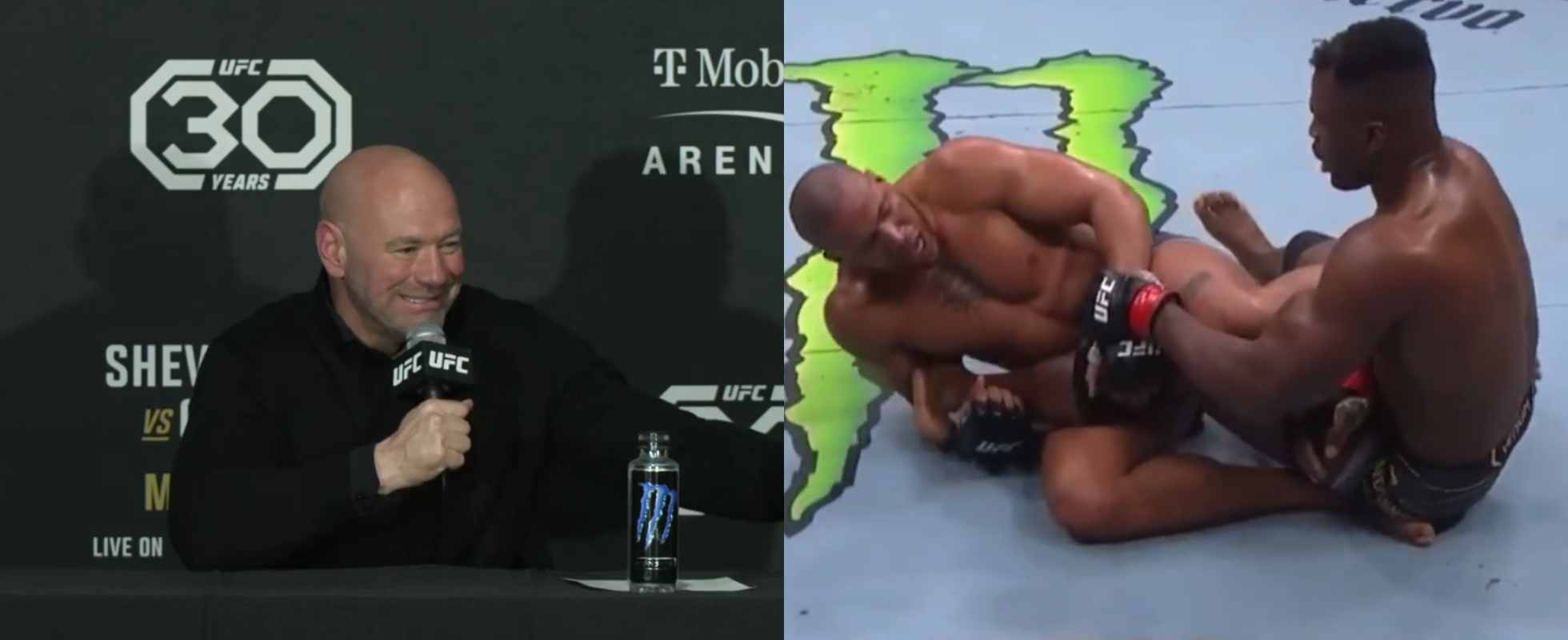UFC 285 marked the momentous return of Jon Jones. Jones made his heavyweight debut against Cyril Gane.
Jones managed to steamroll Gane and submit him in the first round with a guillotine. He took a single low blow in process, cementing his reputation as one of the greatest mixed martial artists of all time.
Jon Jones is only fighter who can compete with khabib's legacy
His breed is different man🔥pic.twitter.com/1MhlSjk5k7— A. (@__notsocool_) March 5, 2023
Gane expressed disappointment in himself for allowing Jones to take control of the event. Some fans have questioned Gane’s ability to lead the heavyweight division, but Dana White still supports him.
“If he doesn’t go for the heel hook, he wins that” – White backed Gane on UFC 270 performance.
R5: *3:06
Gane manages to complete his own TD but concedes to Ngannou’s reversal. Bon Gamin attempts a very unorthodox heel hook attempt but cannot get the submission. pic.twitter.com/cP4NkBaP4Z
— Alexander Volkara France (@ThisIsntVolk145) February 28, 2023
“I mean, he made one silly mistake, you know, out of the five rounds.”
“Tonight he I mean, to even compare Francis Ngannou or Cyril Gane to Jon Jones… You can’t can’t even compare him to this guy. He went in there and finished. ”
“I still can’t f***ng believe what I saw. how easy and how fast. ”
Cyril Gane had no regrets about heel hook attempt at UFC 270
Gane previously said he had no regrets about the heel hook attempt. He told MMA Hour:
“I did very well, and after I did this choice to go to the ankle, unfortunately I did some mistakes in my technique.”
“You see, this technique for me, I can do that on everybody that I have in my gym. High-level wrestling, high-level BJJ, and I can do it. I’m really comfortable on this technique, so that’s why I decided to do that, because I know the position was really good for me to go on this technique.”
“That’s why no regrets.”
Dana White may have had ulterior motives
While it’s easy to blame that heel hook attempt for derailing Gane’s chances there are several factors that should be noted.
For one, Dana White is very aggravated with the bad publicity Ngannou’s negotiations with the promotion and free agency have brought the UFC.
For another, Ngannou went into UFC 271 against the advice of a medical professional, with one leg practically. He would go on to get surgery on the knee in the immediate after math followed by more than nine months of physical therapy.

